The countdown has started, diving into Pius' works!
Many are surprised that Pius has to be prepared so thoroughly.
Not that an Hallberg Rassy 53 was not designed for this but after 20 years and 2 previous owners it is good to take care of two things:
- Check the condition of the structure
- Improve the improvable
This is what I did from September 4 to December 14, 2023 to prepare Pius for next ocean sailings:
1st Disassembly of the rudder, after having received the HR's drawings:
- HR53 Lower Bronze Heel Fitting.pdf
Shaft and bronze skeg's elbow in perfect conditions as well as upper bearing, washer and simmer seal.
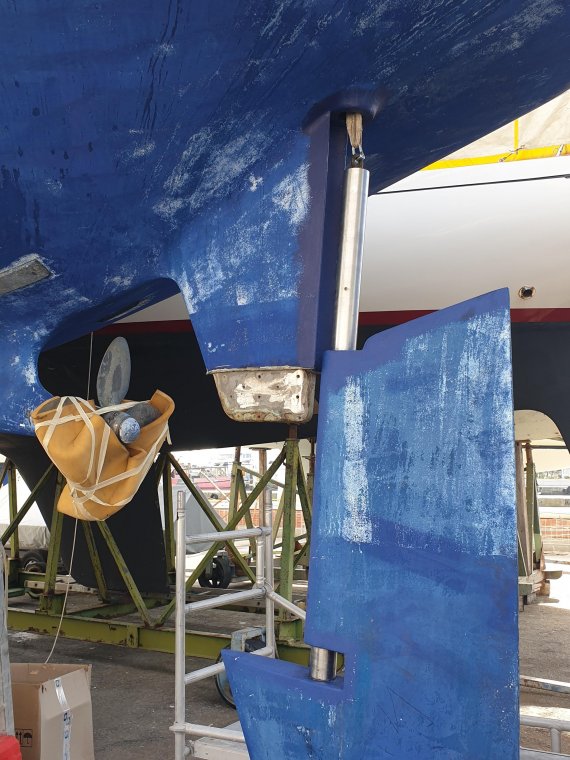
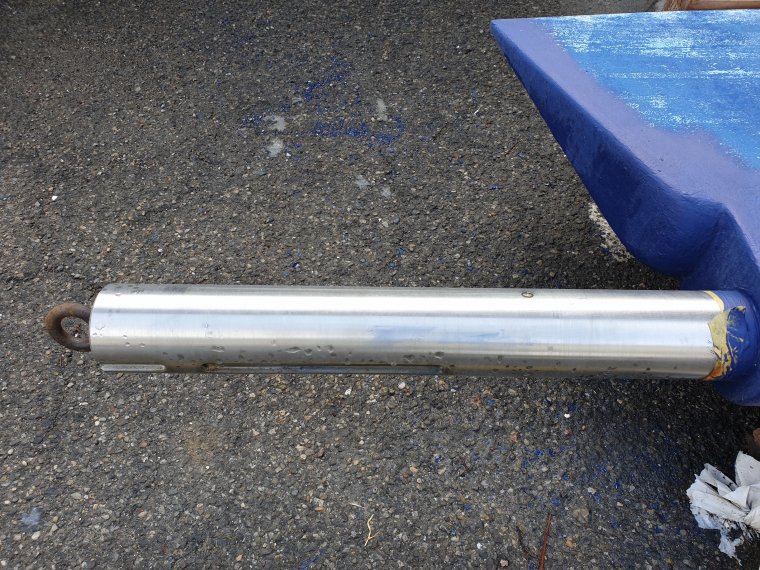




As a precaution, we replaced bearings and the simmer seals .




2nd, all standing and running riggings + mast wiring replaced, new AIS and VHF radar, cables and antennas, upgraded deck light and new radar Scanstrut mount

The swedish wire pressing machine

new ss wires X19

new radar bracket

new deck and motor light

new VHF and AIS antennas

![]()
Not even the remote possibility that the sails could tear due to the cotter pins was overlooked...;)
_/_/_/_/_/_/_/_/_/_/_/_/_/
3rd, Installing a new furler Harken mark IV unit2
The decision to install a second furler was born from the safety principle which requires, during navigation in very rough seas, to avoid leaving the cockpit, managing all the maneuvers from the cockpit.
The dilemma I focused on for a while was whether to mount only the staysail on this furling jib or having a new jib designed to have the power needed to make Pius powerful even against with strong waves.
If you want to sail well, quickly and comfortably, with these boats with great displacement, you must have a lot of 'canvas'...the staysail of only 23m2, used up to now, has proven to be excellent but for winds above 27/30 knots, below I have always had to use it with the genoa partially reduced to have an appreciable thrust.
So I started studying how much surface area this Jib should have.
With Roberto from South Sails, after various simulations we arrived designing a 38m2 Vectran dacron cross cut jib with a weight close to 10 ounces.
This surface should guarantee good power with winds between 20 and 25 knots and in case of stronger winds reduce it partially to face winds of 30/35 knots. The staysail should no longer be necessary if we mount this jib on the new furling.
The only real obstacle to this choice was the interference with the D1s which are particularly advanced in this rigging. Therefore, to overcome the difficulty of adjusting the sheets with their cars, we have reversed the their position for adjusting the genoa sheets with that of the jib/keel which will now be further aft.
In order to reassemble the Furlex hydraulic motor of the genoa on the new 14mm forestay it is mandatory to proceed with the installation of a WEDGE STA-LOK L, these are the steps to follow:





. 


The new Harken Mark IV unit 2
It's time to crane up!
Once the new rigging has been checked and installed We put the mast aboard...a delicate operation, not so much for the weight but for the dimensions: 22 meters of mast with 4 meter wide spreaders and hanging rigging with hydraulic motors and furling jib.
And once it is placed on deck, you have to adjust the shrouds correctly because the mast will have to stand on its own from now on!




4th, set up the repaired sails and the brand new Jib

The new Jib
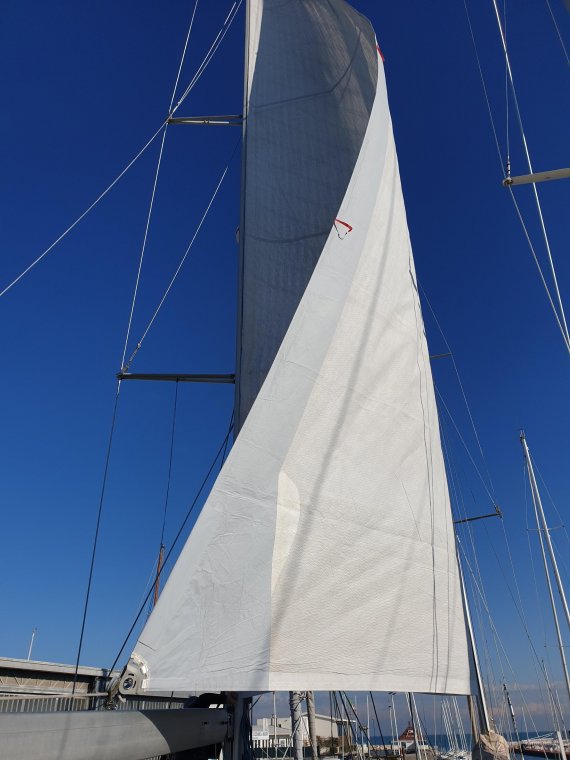
Repaired and reinforced Main Sail

Modified Storm Jib to be set up on the furled jib
5th, SSB dismantling to have room for Mr. Starlink, a new battery bank, increasing to 960Ah the services energy bank + 2 new start batteries of 140Ah each and their new regulator for the mobile solar panel 12V.
 $
$

6th, dismantling of all electrical motors on board for checking, cleaning and condition of brushes and stator. Windlass, mainsail winch, primary diaphragm Santina pump, watermaker and A/C pumps, 24V and 12V alternator.
7th, replacement of the air bilge pump sensors with a float sensor for operating the primary pump, 2nd audible alarm sensor and indicator light + 3 sensors for operating the secondary pump.

8th, replacement of all Volvo Penta engine cooling pipes, cooling water with sea water, new turbo body and a new elbow and all main engine spares as motor starter, fresh and raw water pumps, diesel AC pump.




9th, replacement of all the gaskets of the large and small hatches
10th, emptying, cleaning and lifting of the diesel tank to check the tightness of the keel bolts.
With great surprise we discovered that it is not possible to disembark it because it does not come out of the companionway, although Hallberg-Rassy has the reputation of being the only shipyard that designs boats in such a way that every piece below deck can be disembarked without cutting the deckhouse or the entrance.
11th, replacement of the Webasto burners because they were malfunctioning, although one had already been replaced only two years ago when Pius and I were in Trapani
12th, 2 more 120Ah Gel batteries to be added to the service battery bank for a total of 980Ah and 2 new start motor 140Ah batteries .
13th, new Starlink antenna and router for Internet telecommunications even off shore.



...with Super performances!

_/_/_/_/_/_/_/_/_/_/
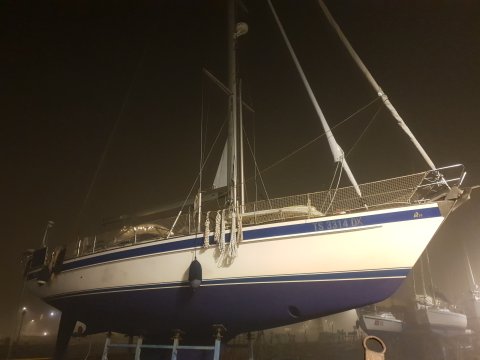
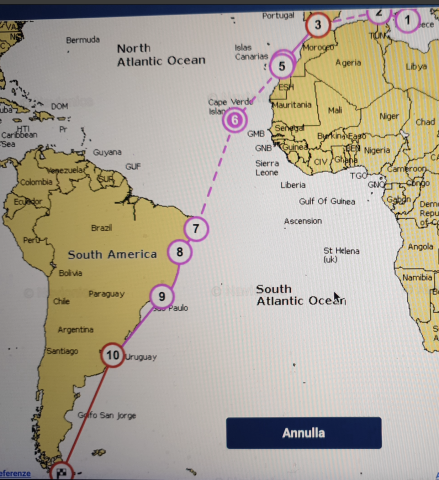
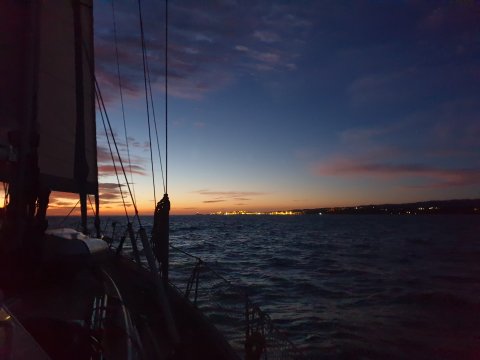
0 Comments